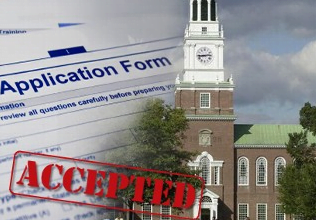Working with some of our customers we (and they) see previously unimaginable results. I’m not only talking about hundreds of millions of dollars in new revenue and costs savings.
Working with some of our customers we (and they) see previously unimaginable results. I’m not only talking about hundreds of millions of dollars in new revenue and costs savings. I’m talking about huge gains in customer satisfaction scores and mainstream, objective recognition by the likes of ACSI and JD Powers as well as praise by industry analysts (Gartner, Forrester, etc). But then along comes some other reports like the annual “MSN Hall of Shame” and once again, these companies that are doing everything they can to improve the customer experience, get dragged in the mud and hung out to dry. Why is that?
Well, one reason is that pretty much all these surveys are inconclusive. They take a very small sample size and then mathematically extrapolate the figures to the entire customer base. If you take a company that has 50M customers, in order to have significant results you would need to survey millions of customers. That’s never going to happen. Can the voice of a select few, the most vocal, frustrated customers, speak for the silent masses? No, they can’t.
Even if the statisticians and surveyors all agree that they have a big enough sample size and their margins of error are revealed in the report, it’s not going to be enough to reveal what the average customer thinks. If a report says that 40% of customers rate a company’s customer experience as “very poor”, why isn’t that company loosing 40% of their customer base in a highly competitive marketplace with very little problems of switching to a competitor? Or even 10%? Why are these companies actually adding customers?
Because the metrics are broken. The measurement tools in use are inadequate for the task at hand.
The “Enterprise Feedback Management” (EFM) industry (amongst others) has pulled the wool over executives and business owners eyes. They claim to be able to deliver true “Voice of the Customer” metrics, but ask yourself this as you’re reading along: When was the last time you gave a company feedback through any sort of mechanism (online, phone, paper)? Either when you were extremely upset, extremely happy or you when you were given some sort incentive to do it. This is not going to be a true reflection of what the rest of the customer base is feeling.
So what’s the answer to this problem? You’re using the best tools available and the most advanced technology, right? Wrong!
The real way to measure customer experience is not by applying mathematical multipliers to small sample results from the entire customer base. It’s by understanding that sample’s behavior patterns and applying that to everyone with the same kinds of experiences. Sounds complicated, right? Not really. Let me explain.
If you take your EFM results and then look at the kinds of experiences that led customers to give the feedback that they did, you can filter out all the other customers who had similar experiences. For example, if a cable customer gave you a bad score because his installation was botched, the call center agent was unhelpful and the technician who showed up couldn’t resolve the issue – how many other customers like this one had a similar experience but didn’t take the survey? What is the true impact on your business? How do these experience impact your overall customer satisfaction and retention rates?
These and other questions can only be answered by analyzing every one of your internal and external systems and applying the results to every one of your customers. It seems like a daunting task, but ClickFox is the only company who can and is doing this sort of analysis. It’s not enough to look at a single vertical silo like your website or your call center and saying that you can resolve the issues. You need to look at everything and everyone.
Are you doing that?






